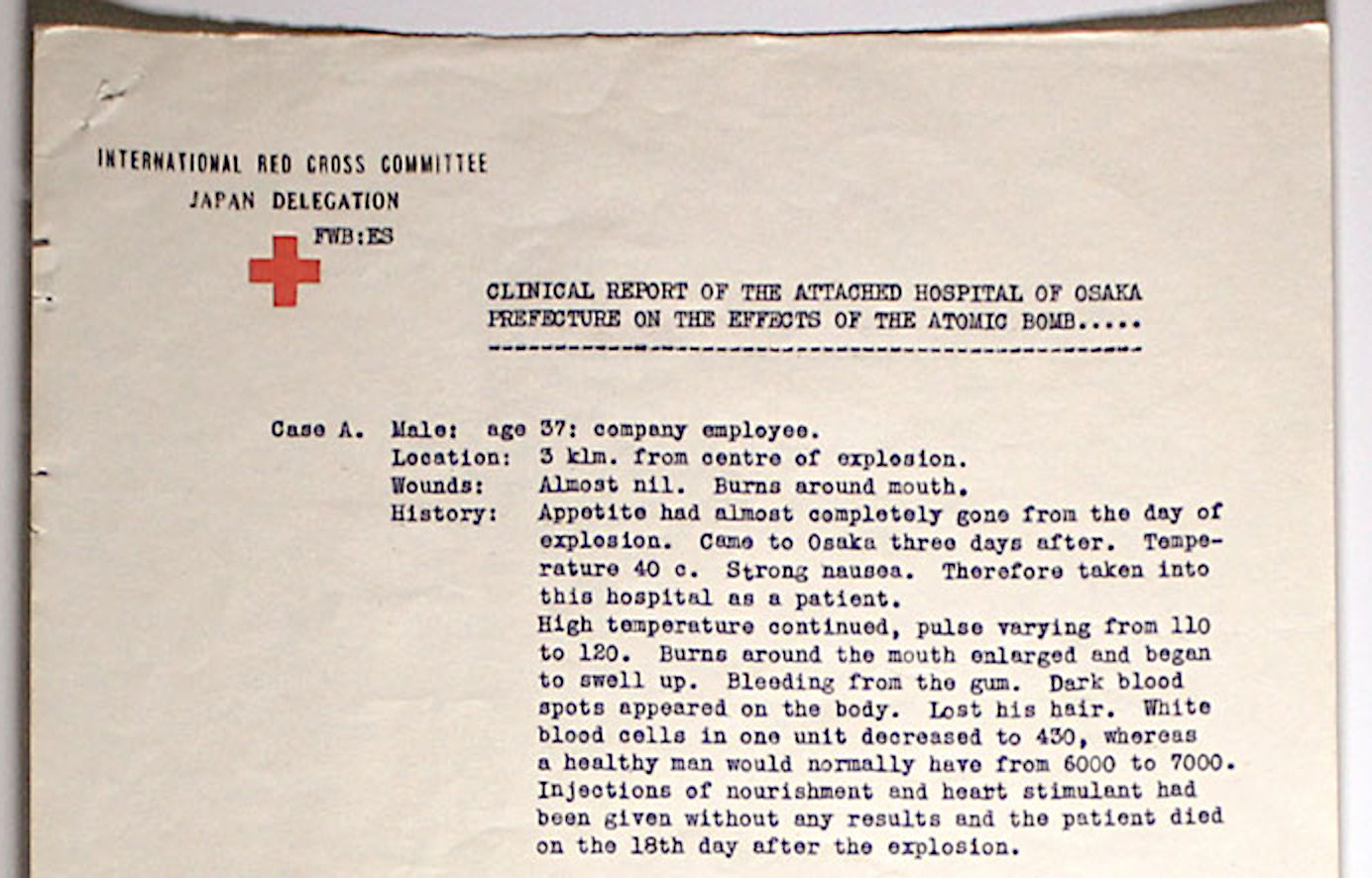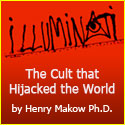Hiroshima- Radiation Sickness Was Mustard Gas Poisoning
April 23, 2023

"The malodorous “atom-bomb gas”
that was perceived by many during
and after the bombings was none
other than mustard gas."
This begs the question - Are nuclear bombs another hoax?
What's in those missile silos? Bales of hay?
(Disclaimer- I still believe the official narrative but would not be shocked if Dr. Palmer is right. He is an MD and chemistry professor at the Unniversity of Waterloo fired for refusing the gene therapy.)
by Michael Palmer, MD
(henerymakow.com)
In previous posts here on Henry’s website [1,2] and elsewhere [3,4], I have argued that no atomic bombs were dropped on Hiroshima and Nagasaki. However, there are numerous reports of radiation sickness from both cities. A recent post here [5] presented some of the eyewitness testimony suggesting that the “radiation sickness” was caused not by radiation but rather by mustard gas. Here, we will look at some of the objective evidence—as well as some further relevant eyewitness testimony—that supports the use of mustard gas in Hiroshima and Nagasaki.
1. Acute lung damage and respiratory distress
While mustard gas has radiation-like effects on the bone marrow, the hair follicles, and other sensitive tissues, there nevertheless are telling differences between the two. Inhalation of mustard gas will cause acute and severe lung damage. In contrast, in those exposed to rapidly fatal radiation doses, it is the brain, not the lung, which shuts down first [6, p. 218]:
"In a nuclear criticality accident at Los Alamos in 1958, one worker received a total body dose … between 39 and 49 Gray. … This person went into a state of shock immediately and was unconscious within a few minutes … The patient died 35 hours after the accident."
In contrast, many early victims at Hiroshima and Nagasaki suffered the most intense respiratory distress. An eyewitness from Hiroshima, Mr. Hashimoto, recounts from the day of the bombing [7]:
"When I reached the Misasa railway bridge … I encountered a dead man. I saw many others in the water tanks fighting for breath. The sight was horrible."
Mr. Hashimoto also describes the aftermath:
"During those days, wherever you went, there were so many dead lying around it was impossible to walk without encountering them—swollen, discolored bodies with froth oozing from their noses and mouths."
The "oozing froth" noted by the astute Mr. Hashimoto is an indication of toxic lung edema, which is also known from cases of unprotected exposure to mustard gas [8]. Other effects seen in early fatalities are lung emphysema, i.e. excessively inflated lung tissue, together with atelectasis, i.e. compressed or deflated lung tissue (see Figure 1). The simultaneous presence of emphysema and atelectasis is also described in standard works on mustard gas poisonings that were published after World War I [9,10].
 Figure 1: Lung emphysema (excessive inflation) and atelectasis (compression) in an early fatality from Hiroshima [11].
Figure 1: Lung emphysema (excessive inflation) and atelectasis (compression) in an early fatality from Hiroshima [11].
2. Acute radiation sickness in people who weren’t near the alleged nuclear bomb
According to the official story of the bombings, rapidly fatal radiation doses could only have been received 1) within less than 1.5 km from the center of the detonation, and 2) at the exact time of the detonation [12]. However, there have been numerous cases of “radiation sickness” in persons who were not near the bombing when it happened, but who entered the zone of destruction shortly afterwards. An early case report is shown in Figure 2. The available statistical evidence on such cases is presented in Chapter 8 of my book [3].
Figure 2: Excerpt from an early report of the International Committee of the Red Cross [13], describing a fatal case of “radiation sickness” in a young man who entered the inner city of Hiroshima only after the bombing.
Anecdotal evidence further reinforces this point. For example, here is an excerpt from the recollections of Toyofumi Ogura, a history professor from Hiroshima University [14]:
"Yet even some people from that remote area who’d visited Hiroshima after the bombing later developed the symptoms of radiation sickness and eventually died. … They took time off from work and rested at home but in the meantime developed fevers, loose bowels and spots on the skin, all of which gradually got worse. I heard many such anecdotes from people on trains, in the town of Saijo and in nearby villages."
3. Skin lesions
Mustard gas is a blistering agent—it disrupts the connection between the skin and the underlying tissues. Skin blisters are quite commonly described in witness testimony. Ogura’s daughter describes the aspect of her mother’s body after her death due to “radiation sickness”:
"She passed away with a photograph of our departed baby sister, Toshiko … on her breast. … Father, Kei-chan, Kinji and I cleaned her body. … There was a very big blister at her hip from a burn. It was red and must have been very painful. We dressed her in her favorite kimono and scattered paper flower petals over her breast."
Even skin which has not yet detached from its support may do so when subjected to shear stress. Here is a description by Col. Stewart F. Alexander, the US military physician who had looked after the victims of a Luftwaffe attack on an American freight ship which had been carrying mustard gas, in the Italian port city of Bari [15]:
"In many cases large areas of the superficial layers of the epidermis were separated from their deeper layers and torn loose … The pathologists repeatedly noted that these layers of the skin were dislodged upon handling of the body … As the superficial skin layers were stripped loose they often took their surface hair with them."
And here, for comparison, one more quote from Ogura’s book. As he makes his way across the city in search of his relatives, on the day of the bombing, he comes upon an obstacle:
"Near the end of the bridge, I came across three dead bodies lying haphazardly, face up … positioned such that I would be forced to step over one of them. … I could not bring myself to do that.
Since the dead woman’s knees were raised slightly, I grasped the ankles to move the legs aside slightly so that I could pass without having to step over the body. But as I tried to lift the legs, I thought I felt my hands slip. It was an indescribably weird sensation. Looking down at my hands, I saw the exposed muscles of both legs, from the knees down, glinting in the sun. … The skin had peeled off and had gathered at the ankles, all wrinkled up.
I crouched there for a minute, with the shock of it."
Even though pathology reports on victims from Hiroshima are scarce, those that one can find also contain descriptions of peeling skin.
4. Conclusion
So there you have it—the clinical signs one finds described by eyewitnesses and by pathologists clearly indicate that the malodorous “atom-bomb gas” that was perceived by many during and after the bombings was none other than mustard gas. This was, however, not the only deadly weapon deployed in these bombings; another one was napalm. If Henry agrees, I will present the corresponding evidence at a later time.
References
1. Palmer, M. (2020) Japan Nuclear Attacks Were Faked.
2. Palmer, M. (2023) Smoking Gun! No Nuclear Bombs Were Dropped on Japan.
3. Palmer, M. (2020) Hiroshima revisited: the evidence that napalm and mustard gas helped fake the atomic bombings.
4. Palmer, M. (2023) The truth about the bombings of Hiroshima and Nagasaki.
5. Palmer, M. (2023) Hiroshima Deaths Due to Mustard Gas.
6. Hall, E. and Giaccia, A. (2019) Radiobiology for the Radiologist (Wolters Kluwer Health).
7. Hachiya, M. (1955) Hiroshima Diary: The Journal of a Japanese Physician, August 6-September 30, 1945 (University of North Carolina Press).
8. Freitag, L. et al. (1991) The role of bronchoscopy in pulmonary complications due to mustard gas inhalation. Chest 100:1436-41
9. Warthin, A.S. and Weller, C.V. (1919) The medical aspects of mustard gas poisoning (Mosby).
10. Gilchrist, H.L. (1933) The residual effects of warfare gases.
11. Liebow, A.A. et al. (1949) Pathology of atomic bomb casualties. Am. J. Pathol. 25:853-1027
12. Cullings, H.M. et al. (2006) Dose estimation for atomic bomb survivor studies: its evolution and present status. Radiat. Res. 166:219-54
13. Bilfinger, F.W. (2015) ICRC report on the effects of the atomic bomb at Hiroshima. International Review of the Red Cross 97:859-882
14. Ogura, T. (1997) Letters from the end of the world (Kodansha International).
15. Alexander, S.F. (1947) Medical report on the Bari Harbor mustard casualties. Mil. Surg. 101:1-17






